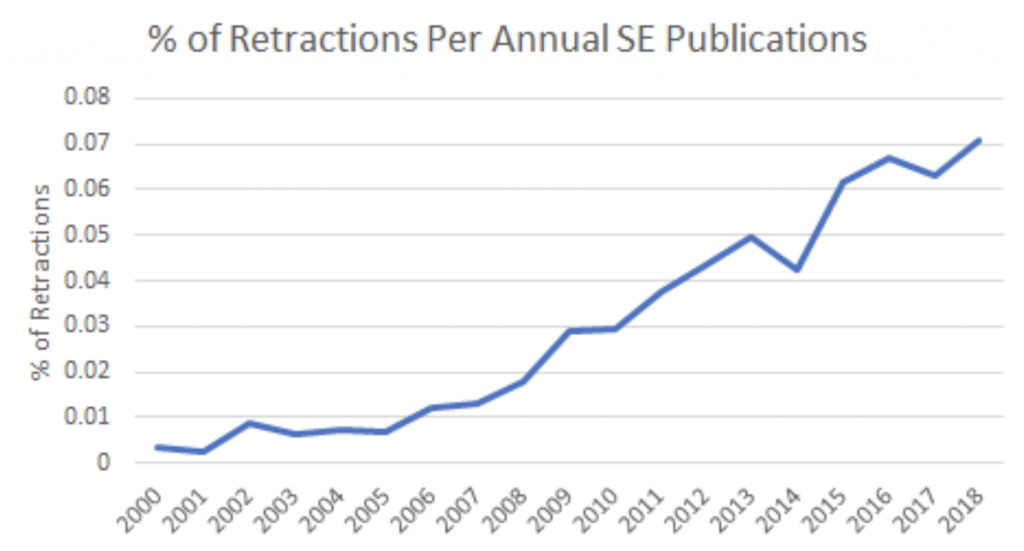2021 was – as is always the case – a busy year at Retraction Watch. How could it not be, with our database of retractions surpassing 30,000 – and then 32,000 – with ten percent happening this year alone?
Oh, and the pandemic. There were 72 retractions on our list of retracted COVID-19 papers when we wrote this end-of-year message in 2020. Today, there are 205.
Perhaps it was scrutiny of pandemic-related scientific claims, or recognition of paper mills and other industrialized fakery as a serious problem, or just gathering momentum as sleuths began to get their due in wider circles, but it did feel as though 2021 was a year in which retractions – and larger issues in scientific integrity – played a big role.
Despite some discussions of a plateau in recent years, the rate of retraction has nearly doubled since an analysis of our database by journalists at Science in 2018. We stop with 2018 in the below graph because retractions take, on average, nearly three years. The 2018 analysis stopped at 2015.

There were, as always, some great stories among those retractions. For a list of our top choices – including some about Star Trek – see our annual review in The Scientist. And we are always encouraged when our work has an impact, the way it did when a researcher stepped down from his post amid an investigation following our pickup by the New Orleans Times-Picayune of our publication of reports into his work at two universities. Or when a company ended its cash-for-citations scheme following our reporting, or when a publisher retracted a paper after we asked about obvious plagiarism.
That goes for our database, too, which as a leading informatics researcher in October called “the best database for retractions,” with about three times as many retractions as PubMed. This year, EndNote and Papers integrated our data to provide users with retraction alerts, joining Zotero, which has been doing that since 2019.
Large news outlets – here’s a sampling from The Times, Nature, and The Hill – continued to follow up on our stories. Vox called Retraction Watch “a bulwark of sound science since its founding in 2010.”
Well over 10,000 readers now subscribe to the Retraction Watch Daily.
Looking forward to 2022, we would like to once again hire a full-time editor, a position we were last able to fund in 2018. In order to provide job security for the person in that role, given our current reserves, and revenue projections, we need to raise an additional $100,000 over the next two years.
If you value our work, please consider a tax-deductible donation to support our work. You can make a one-time tax-deductible contribution by PayPal or by Square, or a monthly tax-deductible donation by Paypal. Or if you prefer to send a check, please make it out to The Center For Scientific Integrity and mail it to 121 W. 36th St., Suite 209, New York, NY 10018.
Happy New Year!
